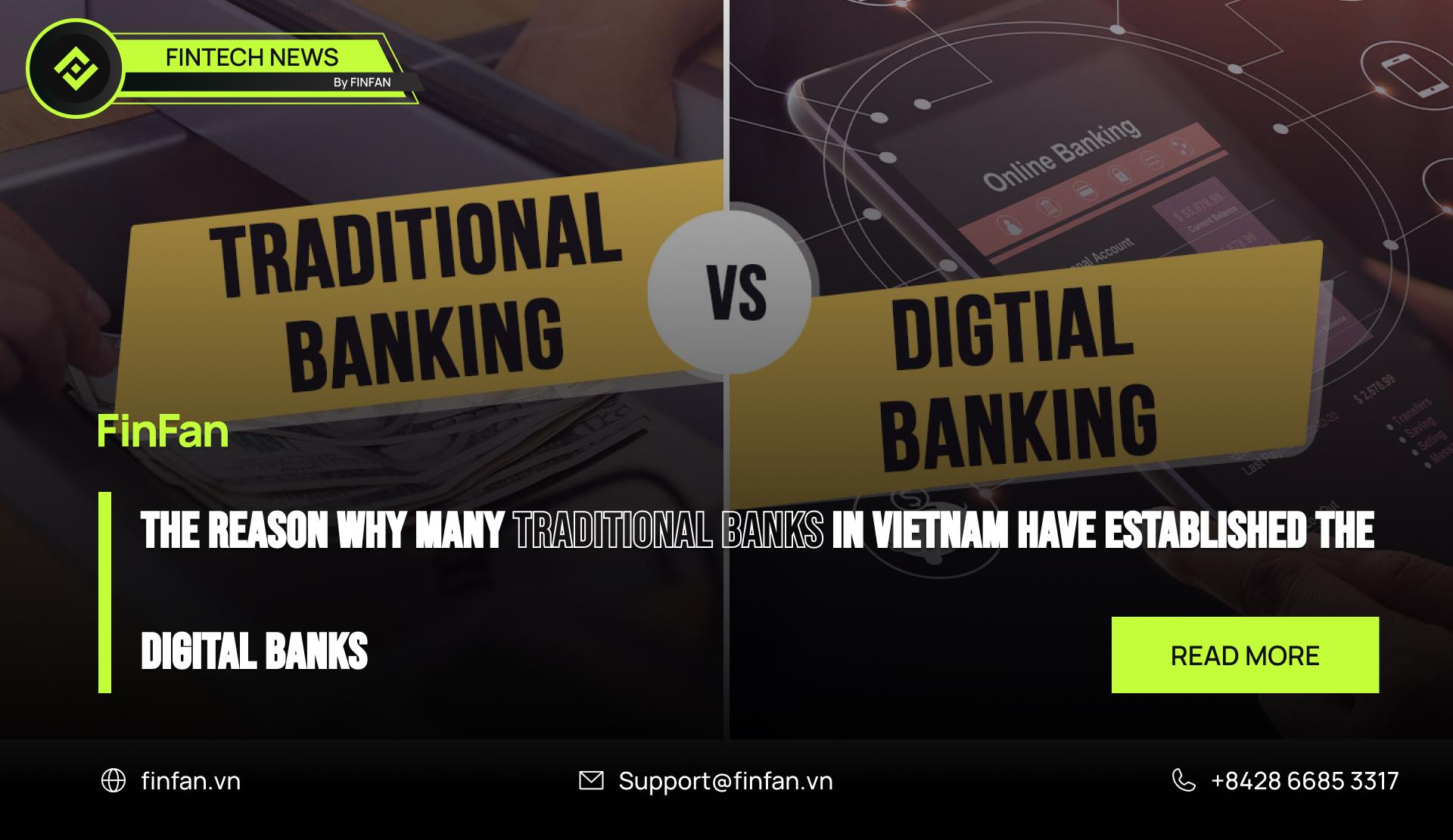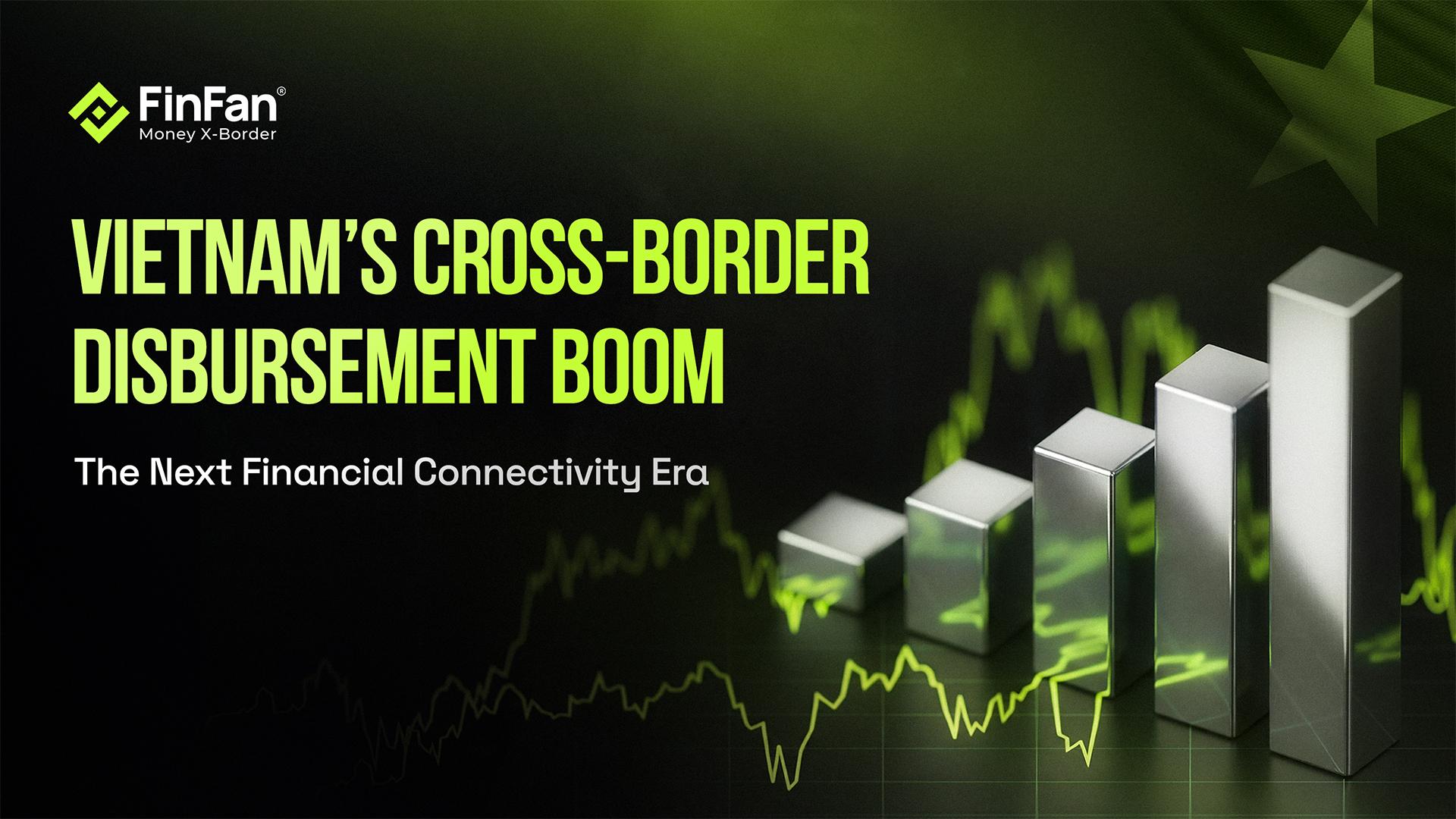The reason why many traditional banks in Vietnam have established the digital banks

In the article What are the differences between fintech and banks, we knew that fintech is the future and it can be more developed.
Recently, many traditional banks in Vietnam (even Big 4 bankers) have established and developed many digital banks. Why are they doing this? Let’s find out the answer with FinFan in this essay.
The changing behaviors of a new generation
The previous generations of Vietnam (from Baby Boomers to Gen Y) evaluated a bank’s success based on the number of branches across the country.
“That's what my father thought when he decides to deposit his savings in a certain bank”, he always chooses the bank which has lots of branches in Ho Chi Minh City.
T, a student from UEH (University of Economics in Ho Chi Minh City) replied.
When asked if your choice is the same, T only chooses the bank based on its convenience.
The above story also partly shows us the change in consumer awareness and behavior of younger generation customers. They judge the success of a bank by its convenience and speed.
While customers of some traditional banks need a lot of time to be able to complete some formalities and paperwork to open a savings account, some new digital banks now only need a few seconds to complete the above problem.
Once the development of these banks among young people grows stronger, it will be a huge challenge for traditional banks.
Cutting down the personnel in the banking industry in the context of the economic crisis
The coming economic crisis brought many difficulties for the banking industry as they have been facing a number of challenges from problems arising in the process of providing services and their own investments.
At this time, the bank is required to make significant adjustments in its capital structure and a large part of it is the salary structure for employees (especially the counter consultants).
A special feature of the digital banking model is that there is no need to spend too many banking consultants at the counter, all operations are completed on a smartphone device before carrying out some other mandatory procedures at the counter.
Moreover, with the development of eKYC (electronic Know Your Customer) and NFC (Near-Field Communications) technologies, all procedures to register or create an account can be done anywhere and anytime. Customers now don’t need to go to the banks’ branches anymore.
The only reason for them to come to a banks’ branches now is just to deposit money into their account to continue trading or withdraw an extremely large amount of cash that the withdrawal limit on the app does not allow them to do. do it.
However, that problem can now also be solved by some electronic counters where only 1 consultant or AI intervention is enough (TPBank is the first digital bank to do this).
Therefore, the need to cut down on bank advisors at the counter is very large after banks have now tended to switch to digital banking.
The greening trend of the market
For a green environment, the slogan has become popular in Vietnam and around the world recently. In order to do that, we have to cut down on some things that affect the environment (typically papers that come from bank transactions or other banking services receipts).
With the development of technology along with electronic invoices, we can solve the above problem through the development of a digital banking system.
Notes on transforming the digital banking model of traditional banks.
Digital transformation in banking requires banks to shift to digital services quickly and strongly in the online environment in order to effectively interact with customers in the front-end as well as in the online environment, such as requiring changes in back-end processes (FinFan can help the banks to do this) to support front-line transitions and improve operational efficiency through increased digitization and automation.
Therefore, digital transformation is not merely the digitization of existing processes, but the reinvention of business processes and business models, as well as the creation of new values based on the application of advanced technologies.
Industry 4.0 technology to provide more innovative, personalized banking services and enhance a more seamless and seamless experience for customers. From there, banks also need to structure and set up organizational apparatus and management methods appropriately in a streamlined and efficient manner.
This article was curated and authored by FinFan's market research and development team, alongside our marketing department.
About FinFan
FinFan is a cross-border embedded financial services company, focused on mass disbursement, collection, card processing, IBAN, digital APM solutions, able to provide valuable input and integration above and for the same purpose.
FinFan has integrated with most famous MTO, PSP, switch and core fintech platforms in the world such as Money Gram, Thunes, Qiwi, Remitly, World Remit, Bancore, PaySend, Terrapay, Ria Money Transfer (Euronet), Dlocal , Ripple, TripleA, FoMo Pay, Wings or Zalo.
For more information please contact us via:
🌐https://finfan.io
📞(+84) 2866 85 3317
✉ support@finfan.vn
LinkedIn: FinFan





